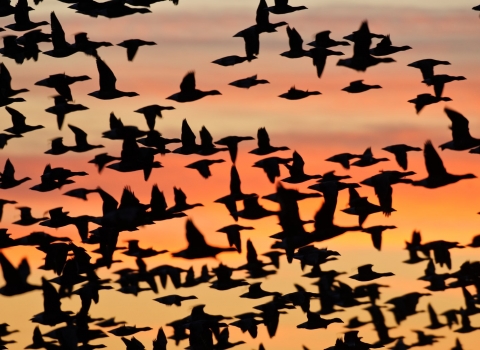Migrating birds
From avian visitors arriving in autumn to spend the winter in the UK, to passage migrants stopping over on their long journey north or south, bird migration is one of the UK’s most impressive natural events.
What to look out for
Be prepared for an early start, the first few hours of the day are often the busiest time for birds!
Arrivals
Come autumn, some birds arrive in the UK from the north and east in search of milder climes and plentiful food, before returning to their breeding grounds the following spring.
Departures
Some species only stay in the UK during the warmer months of they year and head south as winter approaches. These include swallows, martins, swifts, nightingales, nightjars and cuckoos, which all migrate to Africa.
Passage migrants
These are birds that stop off in the UK on their way north or south. Taking time out to feed, rest and socialise before continuing their journey.
Passage migrants can be harder to spot than winter migrants, which often gather in large flocks. Look out for birds such as wheatears, osprey and sandpipers stopping off on their journey.
Irruptions
An irruption is the arrival of bird species in the UK that do not usually visit our shores in large numbers.
Waxwings
A colourful winter visitor. waxwings can often be spotted in berry-laden bushes in towns and car parks. Sudden invasions of waxwings occur when the berry crops fail in Northern Europe, or the bird population outgrows the supply of food. Waxwing irruptions happen around every 10 years.
How to identify
The Waxwing has a pink crest and breast, a black mask and throat, a grey rump, a black tail that is tipped with bright yellow, and yellow-and-white markings on its wings.
Hawfinches
In recent years, large flocks of our largest and most elusive finch have been spotted in the UK after crop failures in Northern Europe forced them to look elsewhere for food.
How to identify
Hawfinches are huge compared to other finches, with a distinctive top-heavy silhouette created by their large head and thick, triangular bill. They are predominantly a rusty, orange-brown, richer on the head and tail, with a dark brown back and a black patch around the base of the bill.






